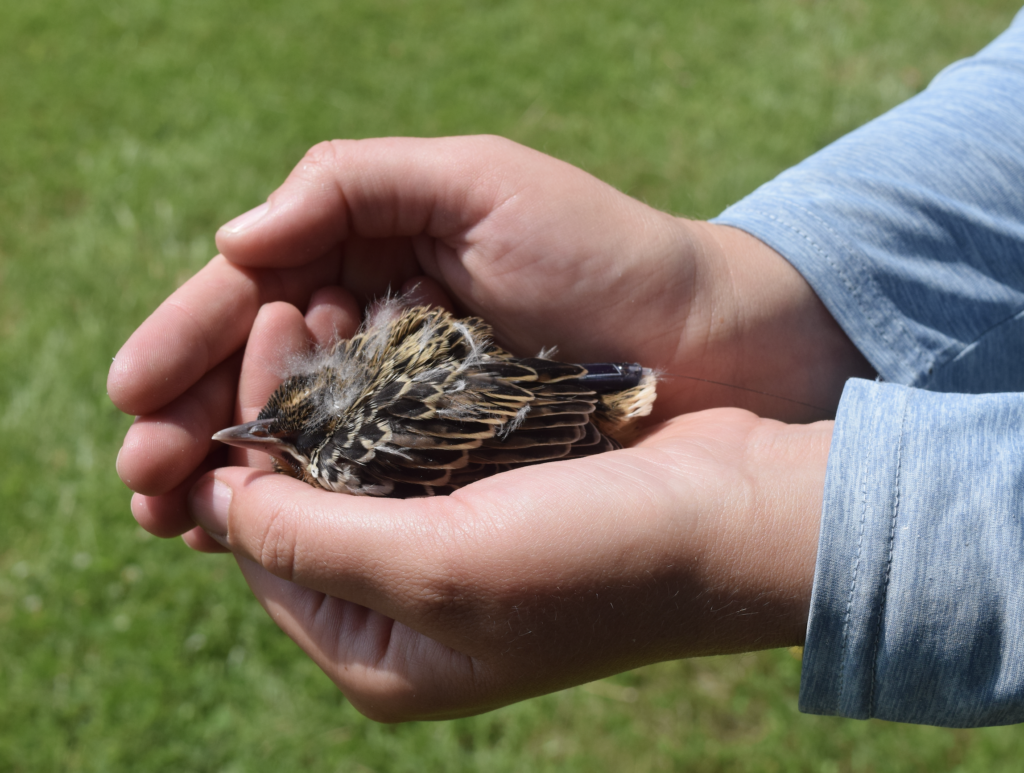Project Fledgling: Uncovering The Cryptic Life Stage Of Declining Grassland Birds

Project Objective
To examine the post-fledging survival and movements of juvenile Eastern Meadowlark, Bobolink, and American Kestrel using novel tracking technology.
Description
Grassland bird conservation is dependent on understanding specific causes of decline throughout the annual cycle. Yet, our comprehension of life cycles and limitations outside of the breeding season is lacking. For example, the weeks after leaving the nest are referred to as the post-fledging period and it is recognized as one of the most vulnerable life stages. During this time, young birds gain independence from their parents; they master the art of flight, develop foraging skills, avoid predators, and cope with the environment around them. The behavior and ecology of juvenile birds has a significant effect on population dynamics and effective conservation efforts but are largely unknown due to the secretive lifestyle of young birds, and until more recently, limitations in available tracking technology.
We installed a wildlife tracking receiver station (also known as a Motus tower) paired with a series of receiving nodes (called CTT nodes) to monitor juvenile Eastern Meadowlarks, Bobolinks, and American Kestrels on a working farm in the Piedmont region of Virginia. We are using this novel tracking technology to identify the most important factors driving grassland bird survival during the post-fledging stage and how juvenile birds utilize a mosaic of managed habitats. The resulting high-resolution movement data will provide detailed data that can directly inform conservation and land management decisions on working agricultural lands.
This research is in collaboration with George Mason University, the Movement of Life Initiative, Smithsonian Migratory Bird Center, and the Smithsonian-Mason School of Conservation. Funding was generously provided by the Smithsonian’s Women’s Committee, Band Foundation, Beatrice and Adie von Gontard, Kathryn and Tony Everett, and the Jacquemin Family Foundation.
Sources of Funding:
- Smithsonian’s Women’s Committee
- Band Foundation
- Beatrice and Adie von Gontard
- Jacquemin Family Foundation
Collaborators:
- George Mason University
- Movement of Life Initiative
- Smithsonian Migratory Bird Center
- Smithsonian-Mason School of Conservation
Project Contact
- Bernadette Rigley, Research Fellow, Rigley@si.edu
- Amy Johnson, Program Director, JohnsonAE@si.edu
SUPPORT VWL
VWL is supported 100% by grants and donations and our work is made possible by the generous contributions from our community.
The Smithsonian Institution is a 501(c)(3). All contributions are tax-deductible.
GET IN TOUCH
Virginia Working Landscapes
Smithsonian’s National Zoo and Conservation Biology Institute
1500 Remount Road, MRC 5537
Front Royal, Virginia 22630
SCBIVWL@si.edu
540-635-0035
